A look into the mind of Henry Danford, regarding some classic pieces of British literature.
Don't wanna be here? Send us removal request.
Text
Great blog! I love all the different sections, it seems like a really comprehensive analysis. Do you think there are parts about Trump’s religious views that make him seem very un-Arthurian? T.H. White’s Arthur and Ivanhoe both vouch for uniting different groups of people in the same country. Do you think chivalry always positively affects women? His actions aren’t chivalrous, but I think that him and Arthurian leaders both negatively affect the roles of women.
Conclusion
In conclusion, while Trump may have a few characteristics of an Arthurian leader, there are key differences as well. The military strength is the most glaring similarity. As the leader of the most powerful military on Earth, Trump certainly meets this criteria.
As for chivalry, while Trump may have committed four years of his life to serve his country, it does not seem that he has committed to protecting women. Some of his various comments about women that were unearthed during the election show that some of his views on women are less than chivalrous. The typical chivalrous knight is one who puts his life in danger if that’s what it takes to save the damsel in distress. While this cliche may not paint women as the smart and capable people that they are, Trumps public comments on women seem a far cry from someone that would risk it all to save a women who needs help.
On religion, it could be argued that Trumps anti-Muslim policies mirror a crusade. His attempted ban on travel as well as the recent bombing in the Middle East can both be compared to Medieval Crusades. His staunch opinions on Muslims reveal a medieval mindset that may be the most Arthurian thing about his rule.
While being the president is certainly comparable in power to the King of Medieval England, the personal ideas and attributes of Trump vary from the code of honor expressed in Arthur’s tale. While his military might and activity in the Middle East is analogous to the medieval crusades, the characteristics of personality reveal someone who is not an Arthurian leader. He does not stick up for women and his religion manifests itself in anti-Muslim agendas instead of public works that could help the poor and helpless. Overall, it is hard to say yes or no to the question “Is Trump an Arthurian ruler?”. He may have some of the traits that also described Arthur, but some components are clearly missing.
1 note
·
View note
Text
Donald Trump and the Arthurian Narrative
One of the more prominent characterizations of a ruler in Arthurian literature - especially in Scott’s Ivanhoe and White’s Once and Future King- is military conquest. We watched Wart’s evolution in role from humble servant/squire to that of the Legendary King Arthur. In Arthur’s younger years as a leader, he was excited and invigorated by military conquest. Arthur fought to assimilate the defeated peoples into his own kingdom and forced upon them a new way of life - a “better” way of life by his standards. He was King and therefore knew best - the “might makes right” concept. Scott’s Ivanhoe was also a faithful soldier in the Third Crusade in which chivalrous and pieous glory was leveraged to justify an extensive and relentless military conquest against Saladin for control over the Holy City Jerusalem in the late 1100’s[Ref(1)]. It was for the benefit of one group (the Christian Normans and Saxons of England) for which the Perfect Knight and Richard the Lion-hearted fought, strongly displaying the “might makes right” characteristic of leadership. This webpage describes how both Saladin and Richard both fought for the same reasons but on different sides:
http://www.shadowedrealm.com/medieval-articles/exclusive/richard_saladin_warriors_third_crusade
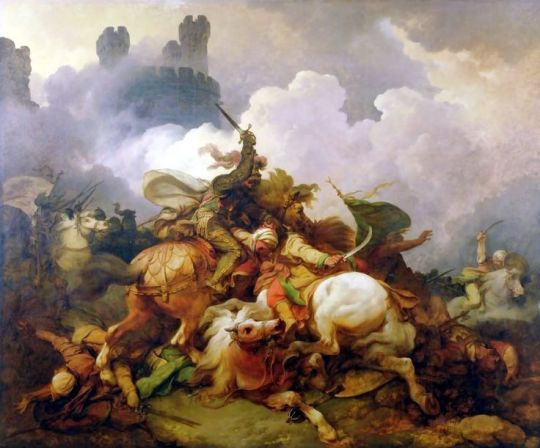
[Above: King Richard slays a muslim noble. (From Pinterest)]
But Arthur eventually came to a critical conclusion after White’s Merlin paralleled his conquest to that of Hitler: “might isn't always right”, and might should fight for what is right by moral standards. Military conquest in support of “Might for right” is a cumulative metric that emerges from the Arthurian characterization of the leadership of a good ruler. We can even criticize Richard for personally entering the Crusades when his country needed him most. As a result of his military exploits, his position was usurped by John and the kingdom fell into unrest. Let’s analyze how our current President Donald Trump measures up with this metric of leadership by looking at his recent military action against the President of Syria Bashar al-Assad.
During the previous presidential administration, Trump warned Obama through Twitter “Do not attack Syria. There is no upside and tremendous downside.”[Ref(2)] It has been argued across many platforms that the best way for America to be involved in the civil war would be through political pressure on Syrian President Bashar al-Assad to walk away from his office. This approach would mean less US military involvement and more discussion on political pressure. Now with Trump in the White House only a few months, he has apparently revised his position on the Syrian situation and authorized the delivery of 59 Tomahawk Cruise Missiles into a Syrian airbase where, according to intelligence reports, a chemical attack was launched on rebels who are politically opposed to the Syrian ruler.
In the heat of the moment, the Administration's actions were hailed as strategically decisive and courageous. Any news report we saw that day commended the retaliation on the Syrian airbase. But in a press release Hawaiian Congresswoman Tulsi Gabbard rebuked Trump’s retaliation, saying it was reckless and complicated the Syrian conflict.
“This Administration has acted recklessly without care or consideration of the dire consequences of the United States attack on Syria without waiting for the collection of evidence from the scene of the chemical poisoning...However, because of our attack on Syria, this investigation may now not even be possible. And without such evidence, a successful prosecution will be much harder.” [Ref(4)]
The Congresswoman’s remarks hone in on the characteristics of the leadership Trump displayed with this military strike. The American response to the reports of a chemical attack was short-sighted and possibly premature, in an example of military action by a ruler based on his singular definition of the right thing to do - a clear example of the “might is right” concept. Many have criticized the US as being the “World Police”, pushing our ideas of foreign policy on those who have different ideologies than our own and using military action where diplomacy could have been used. Think of the movie “Team America: World Police”, and realize that this satirical film was based on just that idea of “might is right”. Only time will tell how the inevitable Syrian reaction will play out but what we can say is that Trump’s actions last week are completely inconsistent with the Arthurian characterization of strong moral leadership of a ruler, he was in fact acting in the “might IS right” style rather than the “might FOR right” capacity.
Another very important aspect of a leader, which shows up a bit in Ivanhoe through the character Wilfred of Ivanhoe and shows up quite extensively in The Once And Future King through the character Arthur, is courage and bravery. One reason for why this is a vital piece of being a great leader is simply that leaders must make hard decisions where there is no right answer, and they must be able to back up their decisions through force and/or dexterity. Another reason is that a leader may have to show that courage to be chosen (or take over) a position as a leader. The latter example applies in many countries today (like Syria), where revolutions are occurring and the most courageous and brave will persevere and become the new leader(s).

In the story Ivanhoe by Walter Scott, the protagonist's name is Wilfred of Ivanhoe. Wilfred shows a few signs of his courage and bravery. One of these examples follows. “Finding himself now at his ease and near shelter, his curiosity began to awake, and he demanded of the guide who and what he was. ‘A Palmer, just returned from the Holy Land,’ was the answer” (Scott, Ivanhoe). A “palmer” is someone who had fought in the Crusades. Just the fact that Wilfred had been in a war, had actually been in the Crusades shows plenty of courage and bravery. To be willing to die for a belief or for a country clearly shows someone who is brave and may be capable of leading that country.

The other novel being looked at too answer this question of courage and bravery in a leader is The Once And Future King by T.H. White. In this novel, the protagonist’s name is Arthur and he is plenty brave and courageous. Even the small things like sleeping “out of doors” and continually being persistent and sticking his neck out to continually try to hit the target show courage and bravery on Arthur’s part. On page 55, Kay (the Wart’s training accomplice and brother) was “afraid” of the crow taking the Wart’s arrow mid-air, but the Wart was described as “furious.” This little quote just shows that Arthur is someone who is wired to be courageous and brave, to take on large adversaries and come out victorious. And the larger things, like when Arthur insists on turning into an ant (though, he is not ready in his training) to get through a keyhole and help Myrtle. Or when Arthur helps Robin Wood save Friar Tuck even though he is a young man and not an adult. Arthur simply exudes courage and bravery throughout the story.
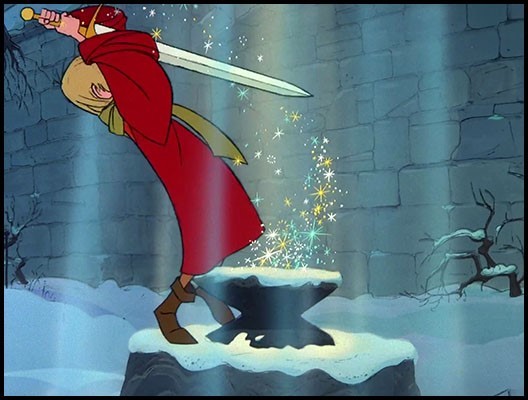
To apply this bravery and courage narrative to our current administration-namely Trump, I think it is important to state that I do not agree with everything that he is doing, but I do think he is courageous and brave in military matters. With his “small loan” of one million dollars, it probably did not take much of this bravery to become a successful business mogul in our society. However, as president I have seen him and his administration be very brave in sticking up for the little guys and not allowing terror to be openly struck amongst the people of the world. How does he stand up? Well, he certainly stood up when he sent 59 missiles at Syria in retaliation for their government pulling a massacre of 90 people with chemical warfare. To compare, our former administration under President Obama did not stand up after a similar chemical attack in the same country - even though he and his administration said that they would. So, within 100 days, President Trump has already shown more courage and bravery than President Obama did in his eight years in office. Another way in which he has stood up is by sending his “armada” (though, there was a bit of a detour) to the Korean Peninsula. This is showing bravery to extend out and attempt to protect South Korea (and really the world) from the ever-so-unpredictable and illegitimate tyrant Kim Jong Un. This comparison is very important to me because while I disagree with many of the social and domestic aspects of this administration, I completely back this administration’s foreign policy and use of military force when necessary. While I do think social aspects are very important, which is why I register as a Democrat, think of the situation we would be in if it wasn’t for the previous emphasis put on our military. In these stories we read, there is always conflict throughout the land of England and the righteous one wins out in the end. In our real-world conflict, I choose to believe that America and Trump are the righteous ones when speaking on the conflict in many Middle Eastern countries and with North Korea. So, hopefully our world works as the novel does and we defeat our enemies who deserve to have their regimes come to an end.
youtube
A common and strong connection can be made between many leaders and patriotism. Patriotism is, “the attachment to homeland” and it is often found in the people who represent and lead a country. It is certainly found in the leaders of the tale Ivanhoe as well as a clear characterization of the United States current leader and President, Donald Trump. In Ivanhoe, we see two cases of patriotism, one with King Richard and one with his brother, Prince John. There appears to be a healthier case of patriotism as well as a very unhealthy and extreme case. The desire to become a leader naturally comes with the passion for the country being lead, it is clear that King Richard has this passion as a king and fights for his country. While it may be viewed as uncaring and dismissive of King Richard to have the throne to go and fight, he is doing the dirty work of a king and fighting for the country he cares for. John has reached an extreme and unhealthy side of patriotism. As a Norman king he feels a sense of patriotism for his country as well as for his people and will go to extreme lengths to make that clear.
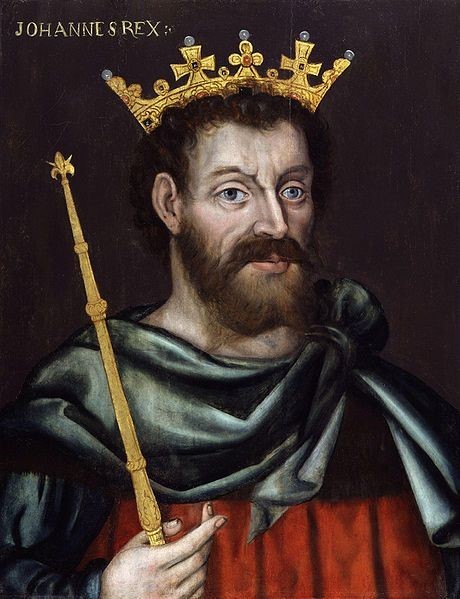
Donald Trump, like Prince John in some ways, exhibits an extreme case of patriotism. Donald Trump’s entire campaign and message to the United States is “Make America Great Again”. He is famous for this attitude that anything can be solved and he is the one who can get it done. He is willing to go to any lengths to protect the United States and has already proven that he will. He has already sent missile strikes and is planning to take on the issues of North Korea. It is hard to say whether patriotism in this case is good or scary because it can very easily go either way. Both Prince John and Donald Trump could use their overwhelming passion for their countries to do so much good but they could also lead their countries into absolute destruction if they are not careful.

In all of the Arthurian stories we have read and especially in The Once and Future King, leaders are characterized by their patriotism and their love and pride in their country. King Arthur was an example of how patriotism can be a good power and it can fuel a good King and any good leader. Prince John appeared to be overwhelmed with the patriotism he had for his native people and treated others unfairly. Today, we wait and see which way Donald Trump will swing. The hope is that he uses his passion to make good changes that need to be made, the fear is that he will use his power to start WWIII.
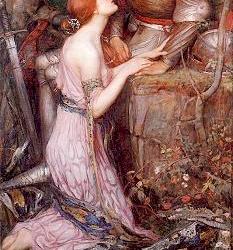
The Arthurian narrative portrays men as being strong, brave, and patriotic, but it doesn’t use the same glorifying light to describe women. In fact, it is far more likely that the Arthurian narrative will describe women as less than men; they often cannot obtain the same positions of power, or are treated as if they aren’t even people with thoughts and feelings. The rulers in the Arthurian narrative have extraordinary amount of chivalry, meaning they are kind and dutiful to women, but this chivalry often undermines that woman’s personhood and glorifies men. Though these stories were written about a time when women had far less rights than men and feminism didn’t even exist, Donald Trump exhibits some of the same chivalric characteristics as these Arthurian rulers.
This sexism is a common theme throughout the Arthurian stories we have read. In The Knight’s Tale by Chaucer, Emylye asks to be her own woman without being forced into marriage, but that request is denied, and she is forced into marriage. In The Once and Future King, women are once again given the backseat with regards to who can sustain a position of power. Guenevere is seen as powerful, but only for her marriage to Arthur. Finally, Ivanhoe characterizes women in a way where they are subjugated to their traditional stereotypical roles as women: Rebecca tends to Ivanhoe’s battle wounds, and Rowena represents the ideal match for an Arthurian ruler because she is beautiful, loyal, and chaste.
To a certain extent, women in these Arthurian tales are treated as objects. This is more evident in older stories like those of Chaucer, but it is also true of Rowena in Ivanhoe. She is primarily considered as an object that represents worth when she marries someone. De Bracy attempts to court her for marriage and Athelstane tries to marry her to another Saxon so that their children would have good blood. She is never expressly given a choice and she doesn’t get to be as powerful or important as the men in the story. Donald Trump seems to treat women in a similarly demoralizing way. In 2016, a video was released of him speaking candidly about how he likes to treat women:
youtube
Since most Arthurian narratives are usually told from the point of view of someone living in that time period, it makes a lot of sense that the rulers in these stories would act in a way that prioritizes men. There was no such thing as feminism, and chivalry was viewed as a positive thing for women. Despite the difference in time period, Donald Trump shares some of these Arthurian qualities. He has demonstrated that he views women as objects most worthy of compliments for their appearance, and he has undermined many powerful women in the process. Although the effects of these sexist ideas has changed, the way that Donald Trump and many Arthurian rulers view women is the same.
References:
Cable News Network, 19 Apr. 2017. Web. 20 Apr. 2017.
Cohen, Claire. "Donald Trump Sexism Tracker: Every Offensive Comment in One Place." The Telegraph. Telegraph Media Group, 04 June 2016. Web. 21 Apr. 2017.
Coll, Steve. "Trump's Confusing Strike on Syria." The New Yorker. The New Yorker, 07 Apr. 2017. Web. 19 Apr. 2017.
Featured Character: King Richard - Ivanhoe, by Sir Walter Scott. (n.d.). Retrieved April 21, 2017
Lawson, Rich. "Richard and Saladin: Warriors of the Third Crusade." Medieval History Resources - Shadowed Realm. Shadowed Realm - Medieval History Resources, 2017. Web. 19 Apr. 2017.
Lendon, Brad. "China criticizes North Korea, praises US on nuclear issue." CNN.
McKirdy, Euan, and Barbara Starr. "Syria strikes: Site of chemical attack hit again.”
CNN. Cable News Network, 08 Apr. 2017. Web. 20 Apr. 2017.
Post, G. (2017, January 23). Trump Declares National Day Of Patriotism. Retrieved April 21, 2017
"Rep. Tulsi Gabbard: Trump's Military Strikes in Syria Are Reckless and Short-Sighted."Congresswoman Tulsi Gabbard. Press Kit, 07 Apr. 2017. Web. 19 Apr. 2017.
RT. “‘We are sending an armada’ MSM getting heated over US, North Korea tensions".
Scott, Walter. Ivanhoe. London: Dent, 1970. 20 Apr. 2017. Web.
Seattlerock. "Trump Gets Caught Saying "Grab Her by the Pussy"." YouTube. YouTube, 07 Oct. 2016. Web. 21 Apr. 2017.
Shmoop Editorial Team. (2008, November 11). Ivanhoe Theme of Patriotism. Retrieved April 21, 2017
US News Today. “BREAKING: President Trump Orders Military Strikes, more than 50 Tomahawk Missiles Fired into Syria”. YouTube.com. Published on Apr 6, 2017. Accessed Apr. 18, 2017.
White, T H. The Once and Future King. , 1987. Web.
Youtube. Abc network 14/4/17. Video. 20/4/17.
4 notes
·
View notes
Text
Blog 7: Chaucer
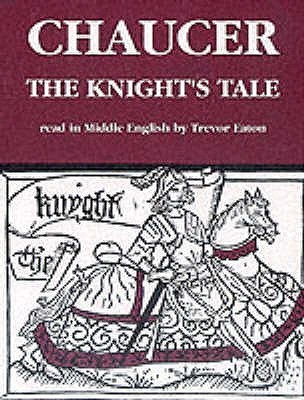
Traditionally, the magic and knights in Old English stories are glorified and celebrated. In the Once and Future King, the knights are heroes and magic is the cause of many of the great things that happen. However, as we read more tales about this time period, and as the stories get older and closer to the actual time period, the portrayal of knights becomes less adoring and more critical. Chaucer’s Knight’s Tale details the exploits of two knights fighting for the love of a woman. While this seems to be a typical story about knightly chivalry, it is also a criticism of the ideals and beliefs of knights during that time. His Canon’s Yeoman’s Tale offers a similar critique of superstition and magic during this time. The practice of alchemy, and magic in general, is shown to be a scam and a fraud, even though so many people trusted and believed in it.
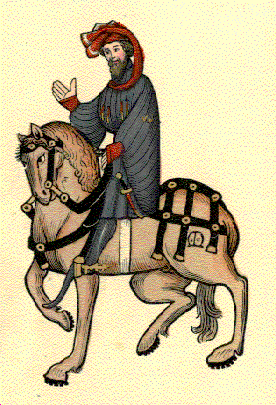
When I read the Knight’s Tale, Chaucer’s portrayal of knights seemed like a rather traditional take on knighthood. However, I believe it was a veiled analysis of the flawed social views of knights. At the beginning of the story, Paloman and Arcite are taken prisoner, and almost immediately fall in love with a beautiful girl whom they have never met. After Arcite is freed, but is exiled from the country, Chaucer poses a poignant question: “Who has the worse, Arcite or Paloman? That one may see his lady every day, but in prison he must always dwell; That other where he pleases may ride or walk, but he shall see his lady nevermore” (1348-1352). With this question, Chaucer draws attention to the absurdity of the problem at hand. Both knights have pledged their love to a random woman, and in doing so, have condemned themselves to be prisoners of their passion. Though Arcite is free to do whatever he wants, he will remain enraptured by some unattainable vision of chivalry.
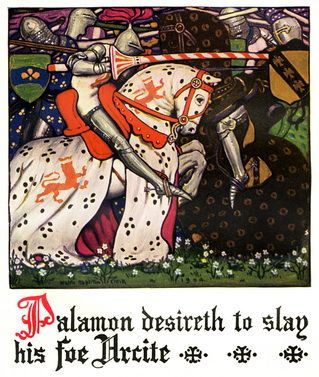
As the story progresses, Paloman escapes and attempts to fight Arcite for Emelye’s love. At this point they are captured, but rather than being executed for escaping prison, they are offered a fair fight to take Emelye for themselves: “That each one of you shall go where he pleases freely, without ransom or resistance, and fifty weeks from this day, more or less, each one of you shall bring a hundred knights […] then I shall give Emelye as wife to whom Fortune gives so good a gift (to win the battle)” (1848-1861). This pompous display of masculinity and strength was typical for knights, but Chaucer illustrates it in a way that shows its flaws. The two knights were fighting for someone who was essentially a stranger, and her father, Theseus, was the one who came up with it. Chaucer emphasizes how women are seen only as objects of desire to knights, and these knights are willing to do anything for Emelye. In the end, Arcite makes the ultimate sacrifice, and dies just after winning the battle for Emelye. His efforts were fruitless, and he wasted the entire last part of his life lusting over a woman he didn’t even know. This shows the ultimate pointlessness of a lot of knightly conduct. Though some of the things knights did were considered good, much of it was also useless competition designed to show off the knights themselves, and Chaucer portrays this perfectly.
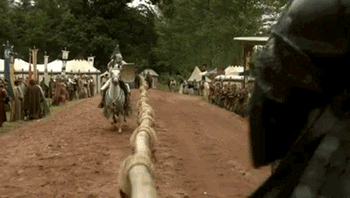
The Knight’s Tale doesn’t use the supernatural for much of its story, but there is a sequence of events where the main characters ask the Gods for help. Paloman prays to Athena and asks for the love of Emelye; after losing the battle and his friend, Arcite, Athena grants this request, because Arcite is dead and can no longer have Emelye. Arcite prays to Mars, the god of war, so that he will win the coming battle. Once again, the God grants the knight’s request, and Arcite wins the battle with Paloman. However, when Emelye goes to pray to the god Diana, she is denied her request. She asks that she can remain chaste and marry neither of the knights, but this isn’t something the Gods are willing to do. “Daughter, cease thy sadness. Among the high Gods it is affirmed, and by eternal word written and confirmed, thou shalt be wedded unto one of those who have for thee so much care and woe” (2348-2352). Even though Arcite and Paloman had their prayers answered, the woman, Emelye, was promptly denied and told that she must take a husband. Back then, it was common to believe that a woman must marry, partly because of the religion at the time. But Chaucer uses this story to show how that belief is excluding women from what they want, and is just a method for men to keep control. In this way, Chaucer shows how the knights keep their power, through extravagant displays of masculinity and chivalry.
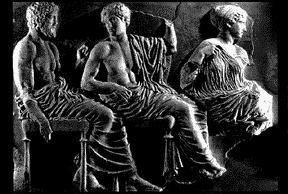
The Canon’s Yeoman’s Tale is a story about a canon who is supposedly an alchemist. He acts as if he is teaching them how to turn metal like mercury into more valuable metal, like silver. However, he is really just scamming them for their money. Chaucer uses this story to denounce magic and alchemy for their harmful ways because alchemy never seems to produce anything good, it is just used as a scamming technique.
While very different in content, Chaucer’s two stories contain the same skepticism of magic and knighthood. He uses the Knight’s Tale to portray the flaws of knighthood and religion, and the Canon’s Yeoman’s Tale to show how magic is only used to hurt people. Chaucer himself probably was not a fan of superstition and the institution of knighthood, and his two tales reflect that perfectly.
0 notes
Text
Blog 6: King Arthur in SGGK
King Arthur, Sir Gawain, and the knights of the round table were around long before Sir Gawain and the Green Knight was written. The poem that was translated by Simon Armitage was written during the Hundred Years War at a time when Britain’s monarchy was about to undergo radical changes.
The rule of Richard II during the late fourteenth century called for a more contemporary twist on an old classic: the tale of King Arthur. However, this portrayal of Arthur and his famous knights show them as flawed and imperfect rather than honorable or noble. The Green Knight’s actions and words make it especially clear that the King and his court have become disconnected from the principles they previously stood for. In the late 14th century, a lot of people may have thought the same of King Richard II of Britain.
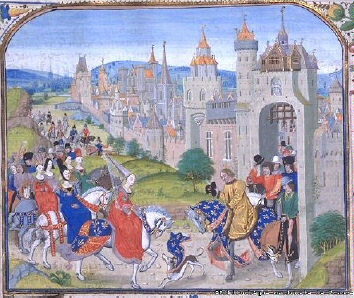
In the beginning of the story, King Arthur and his court are probably the least impressive. However, they put on a façade of being very benevolent and noble: “A warm welcome, sir, this warm winter’s night. My name is Arthur, I am head of this house. Won’t you slide from that saddle and stay awhile, and the business which brings you we shall learn of later” (37). King Arthur himself is very courteous; he doesn’t deny an aggressive looking knight, and instead invites him to stay. Even so, it is obvious that King Arthur and his knights are living extremely illustrious lives. Their entire castle is eating and drinking as much as they want: “Now, on the subject of supper I’ll say no more as it’s obvious to everyone that no one went without” (29). King Arthur and his knights may pose as kind, polite people, but they aren’t actually doing anything to help people in the Kingdom.

The Green Knight is quick to point this fact out. He recognizes that the knights are living in too much decadence, and not living up to their reputation. “The bodies on these benches are just bum-fluffed bairns. If I’d ridden to your castle rigged out for a ruck these lightweight adolescents wouldn’t last a minute” (39). He insults the knights’ physical prowess; he insinuates that the knights of the round table have are no better than him, an unknown knight. In this way, King Arthur and his knights are portrayed as unworthy of their great reputation. The Green Knight even goes on to insult their bravery: “You flap and you flinch and I’ve not raised a finger!” (41). The Green Knight definitely seems to have a problem with King Arthur and his court. The court is portrayed as a place of happiness and wealth, but the Green Knight emphasizes the fact that King Arthur and the knights of the round table aren’t doing anything practical to help Britain.
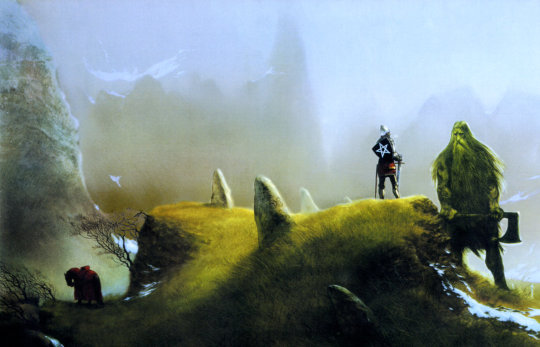
In the end, the Green Knight. that he is right about King Arthur and his court, at least partly. When the Green Knight was finishing his test, he found that the main flaw that Gawain had was his fear of death. “Gawain confessed, ‘I flinched at first, but will not fail. Though once my head’s unhitched it’s off once and for all!” (173). Gawain failed the test and took the girdle that was supposed to save his life. Instead, it was just a ploy to make the knight reveal the true flaws of King Arthur and his court. They are not really the brave knights they claim to be, and this is one of the main ways that the poem undermines the traditional portrayal of King Arthur.
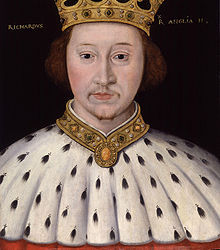
Sir Gawain and the Green Knight’s negative portrayal of King Arthur could be a commentary on the ruler of Britain at the time of its writing, King Richard II. This would have been written during a time of war, when the King wasn’t doing enough for the country. Richard II’s rule ended at the end of the fourteenth century, when he was deposed by Henry. The poem uses the rule of King Arthur to mirror the unsuccessful rule of Richard II, without obviously criticizing Richard himself.
King Arthur and the knights are at first shown as people with a lot of wealth and fortune. But almost immediately, the Green Knight shows that their actions don’t match the values that they claim to uphold. After a series of tests, the Green Knight, and Sir Bertilak, show that the knights have some good ideas, but are not perfect. This is important for the time period because of the unsuccessful rules of the Kings at the time, and the unjust things that they did.
0 notes
Text
Sir Gawain: Blog 5
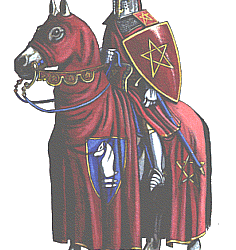
In the Buried Giant, Ishiguro portrays Gawain as a complex character, whose virtues are overshadowed by a sense of duty and righteousness. He has lived a long time in Britain, and has become accustomed to his way of life and the mission given to him by Arthur. He is extremely polite, gentle, and caring to most of the people in the story. For the most part, he exhibits all the chivalrous qualities that one of Arthur’s knights should, but he doesn’t fully understand the morality of his actions. In some parts of the novel, he can even show guilt about his past actions, but his loyalty keeps him from acting on his own convictions. Sir Gawain is not inherently good or bad, but in the end, his sense of duty to Arthur clouds his judgement of what is right and wrong.
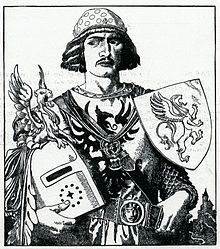
When our main characters first meet Sir Gawain, he is sitting under a tree, and offers kind, peaceful words to Beatrice and Axl: “No harm will come to you! I’m a knight and a Briton too” (104). He sees that these people are Britons and immediately offers his food to them. “Come, friends, sit beside me and share it” (105). Anybody would have likely treated Axl and Beatrice like this, because they are Britons, but Gawain treats Edwin and Wistan with a similar respect.
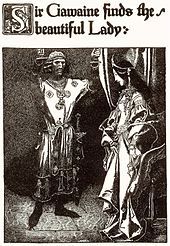
Throughout the story, Wistan and Edwin are subjected to a system rife with racial prejudice. Some Saxons live in peace with Britons, but who they are makes them wanted, and the fact that they are Saxon makes them easy to find. Despite this, Sir Gawain treats them with all the respect he should, because he is a knight of Arthur. He quickly has a dispute with Wistan, but it is only over their missions; he does not help Lord Brennus’ man kill Wistan. Instead, Gawain puts himself into danger to help the main characters. After bravely defeating a beast and saving Axl, Beatrice, and Edwin, he says, “I did all I could. Hid myself in that airless place. Overcame the beast though it had devoured many brave men before us” (179). His bravery and chivalry come from King Arthur’s own style. A knight of Arthur would not miss such an adventure, nor would he let those people die. Sir Gawain seems to be one of the only people in Britain willing to help Edwin live.
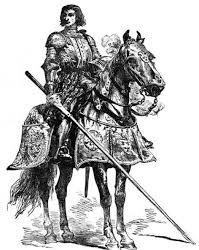
Sir Gawain is the perfect knight. He always follows his duty to King Arthur, and in many ways, this makes him courageous, strong, and noble. But King Arthur’s path might not always be the best thing to do, and Gawain cannot always see it. For this reason, he has definitely done some terrible things. His duty is to help protect the dragon that is robbing people of their memories, and this dragon may be the only reason he can live with himself. We first see the depth of Sir Gawain’s remorse during his first reverie: “A slaughterer of babes. Is that what we were that day?” (214). Even though he may not remember it well, he knows terrible things were done in Arthur’s name. He was tasked with taming the dragon, and he may not have killed innocent people, but he knows that his duty to protect the dragon has also protected Arthur’s legacy. “Yet I was not there, and even had I been, what’s good for me to argue with a great king, and he my uncle too?” (214). His memory cloudy, Sir Gawain finds it hard to act upon this guilt, and continues to fight in the name of Arthur. “Yet I was a good knight who performed his duty to the end” (214).
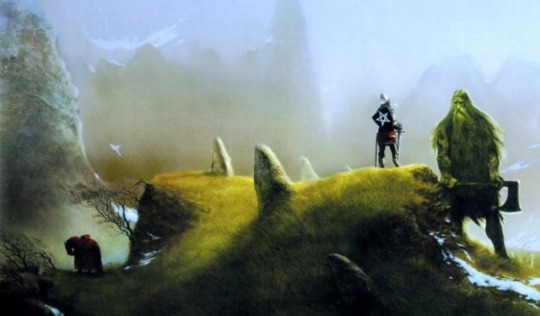
Sir Gawain ends his tale with the same knightly cordiality that he began it with. “Let Horace take you down these slopes, but once you meet the river, search for a boat to take you east” (288). He offers help to the kind Britons before he must go to battle and die. His duty as a knight always comes first, and though he has doubts about where this path has led him, he is determined to finish his life ever faithful to Arthur. Perhaps if he lived beyond the dragon’s death, he might change his mind due to the awful memories it could stir up, but I think he is content dying a proud knight. Gawain can be considered the most significant antagonist of the story; from square one, he is trying to stop Wistan’s quest to kill the dragon. But his duty as a knight also made him a friend. “He was the she-dragon’s defender, yet showed us kindness” (291).
1 note
·
View note
Text
Blog 4: National Memory
Britain has a complicated history with regards to the people who lived there. Over the first 1000 years ad, every group that has possessed most of Britain has been conquered and take over by another nation. Because of this, different groups of people can have bitter feelings towards other groups of people. The Celts and the Picts were the first inhabitants of the British Isles. They were not very sophisticated, and were quickly conquered by the Romans. The Romans however, were not the typical invaders. They stayed for a few centuries, but they left Britain, so that the Germanic tribes could take over. Angles and Saxons inhabited southern England after the Romans left. This is the time period that we are looking at in our literature. The Britons are the people left in Britain after the Romans left. This includes Arthur and our two main characters, Axl and Beatrice. The Saxons seem to be antagonists in our story, and this makes sense as these are the people who would occupy Britain next. After this development, the Normans invaded in 1066 from France. They brought with them a lot of important societal concepts and changed Britain entirely.
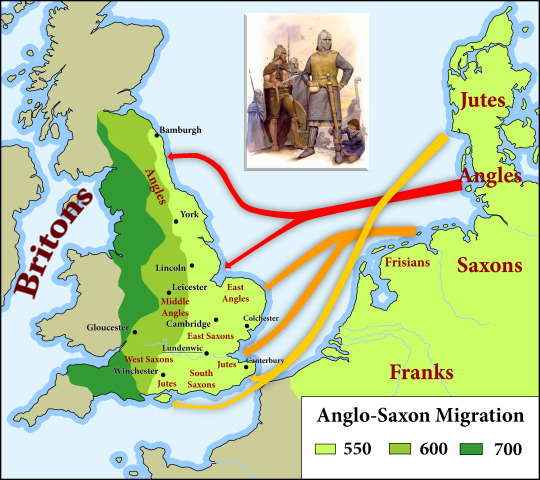
During each immigration, one group of people was inhabiting Britain when another invaded. This accounted for animosity between different people. National memory is the memory associated with one’s nationality, and this is hugely important in such a disputed area. This is very evident in the Buried Giant with the notable tension between the Britons and the Saxons. “National memory” is hugely important to Britain because of the wars fought between groups of people, but this memory can also be the cause of a huge amount of hostility.
In the Buried Giant, Ristan is a Saxon warrior in a Briton inhabited land. Because of their history, Britons are understandably worried about Saxon invasion. In fact, during the novel, the Britons are rumored to be preparing to attack the Saxons with the dragon, Querig. Ristan is roaming around the country, being peaceful to people and helping those in need. He is also there to kill Querig, and prevent an unwinnable battle for the Saxons. Ristan believes that Brennus is going to use a sort of “dragon whisperer” to persuade Querig to fight for him. Ristan wants to defeat the dragon to help his nation; because of his identity as a Saxon, he wants to protect against the Britons.
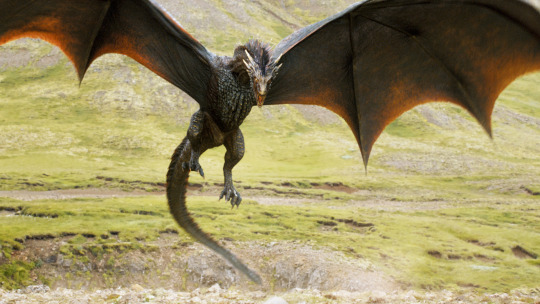
The she-dragon, Querig, is extremely important to “national memory” in the Buried Giant. During the events of the book, a strange mist has been wiping the memories of the people of England. For a long time, it is a mystery, but it is revealed that “it’s the dragon Querig […] that roams these peaks. She’s the cause of the mist you speak of” (153). The dragon has been causing loss of memory. Whether that is positive or negative is not clear.

With the previous wars between the Britons and the Saxons, the “national memory” of these people implies that they should dislike each other. Partly because of the wars that Arthur waged, they have good reasons to have negative feelings. It can be important to remember these events to help defend a legacy or to take revenge for past conflicts. The “national memory” is always going to be an important part of British culture, but it is not always a positive thing.
The “national memory” is the largest cause of conflict and war during this time. Some Britons and Saxons get along, like Axl, Beatrice, Ristan, and Edwin. Arthur and all of his knights were also tolerant. Unfortunately, the members of Lord Brennus’ land, where they meet Sir Gawain, were not. Ristan and Edwin are continuously hunted by Britons because of their nationality. When Lord Brennus’ soldier finds them, he says, “this fellow’s a Saxon warrior, Sir Gawain, and here to do us mischief.” Because of the “national memory” of these two people, the soldier is understandably worried. Sir Gawain asks, “What reason have I to take arms against a man simply for being a stranger?” (118). Gawain points to the flaw of a “national memory”; people start to hat eeach other for no reason other than being rom a different part of the world.
Because of the volatile history of England, “national memory” has a very large effect on the people of Britain. This “national memory” has always been a very important part of British culture, but that doesn’t mean it has had a positive impact. A “national memory” can encourage negative, aggressive behavior among certain groups, and can ultimately hurt a lot of people.
1 note
·
View note
Text
Blog 3: King Arthur
When I think of an ideal government, it is definitely not a monarchy. However, if I were born the citizen of a government that was ruled by a King, I would like King Arthur to be my King. A King can have a very long reign; unlike a president, a King could rule for your whole life. I would want Arthur as my King because he has demonstrated a willingness to learn and become a better King. He has honor, and always tries to do the right thing. Arthur also has the courage a King sometimes needs to do the right thing. He may not have always made the right decisions in The Once and Future King, but he was far better than most “divinely” chosen rulers would be. By comparing him to other rulers in history, it is easy to see why he would be a great King.
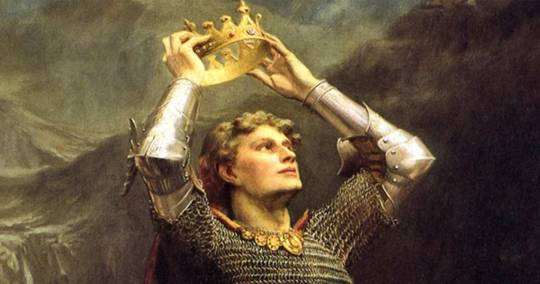
By the end of the book, Arthur has been very successful as a King. He has learned a lot, and has demonstrated his dynamic personality. With this eagerness to learn, he makes a lot of good decisions and creates his own ideas for ruling. “Even now, since the King had begun to encourage Justice so as to bind the power of Fort Mayne once for all, there were three kinds of law to be wrestled with. He was trying to boil them down, from Customary, Canon and Roman law, into a single code which he hoped to call the Civil one” (White 552). With these deep thoughts about the best way to rule, Arthur shows that he is capable of creating new, effective ways to rule. He would be just, and would fight for the rights of the common man. Throughout his rule, King Arthur tries to fight Might, and this is an attitude that would be very beneficial for a ruler.

Arthur is also very honorable. During the middle of the book, Arthur decided that all people have to be looked out for, and nobody should be sent to die. He continues to make honorable decisions throughout the book. When Guenever has to be put to death, Arthur puts his honor first and attends the execution in person. “The old man made no movement, except that his fingers tightened on the wood. He sat staring in front of him. Then he pulled himself to his feet, taking his weight on the wrists, and went to his duty. Unless he was present at the execution, it would not be a legal one” (White 580). Despite the difficult fact that Guenever was being executed, King Arthur was prepared to do what he had to. He was ready to go and watch Guenever die, and since he was the King, he had the honor to go through with it. A ruler who has the honor to do what he has to do, even when it doesn’t help him at all, will be a good ruler.
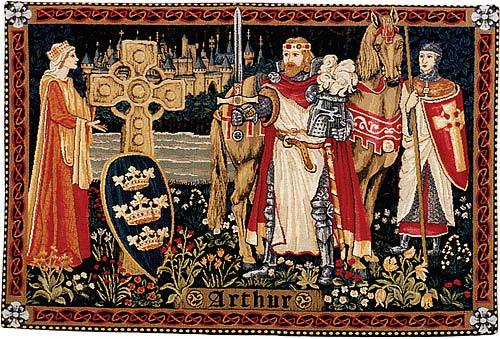
Arthur’s courage is also unparalleled. In today’s times, this is not always totally necessary, at least not in the same way. Today’s leaders don’t have to run out into a battle. They get to sit in offices and make decisions, without the stress of war. Arthur has to do much the same thing, with the added stress of battle. At the end of the book, Arthur prepares to go to battle, and accepts gladly that he will die. “The cannons of his adversary were thundering in the tattered morning when the Majesty of England drew himself up to meet the future with a peaceful heart” (639). I do not live in this sort of society, but if I did, I would hope that my King would have the courage to die for his country. In such tumultuous times, rulers can often be selfish and fight for themselves alone. King Arthur showed not only the compassion, but also the courage to fight for the average citizen, and I would be happy to have someone like that as my ruler.
Clearly, King Arthur has a lot of merits that would explain why he would be a good ruler. His honor, courage, and ability to learn are enough to explain his incredible prowess to rule. For these reasons alone, I would willingly have him as my King. But when you consider the reality of a monarchy, Arthur is a diamond in the rough. A divinely chosen ruler could be anybody. Many Kings turn out selfish and cruel. King Arthur shows that he is far greater than other rulers. He could do half as much, and still be considered successful. His ideas that Might is not right also convince me that our beliefs align. For these reasons, I would gladly have King Arthur as my King.
1 note
·
View note
Text
Hey Pandora,
I agree with your analysis on King Pellinore. Since the beginning of the book, he has seemed to have no purpose at all, except for the purpose he had as a Pellinore. I think this is the most interesting portrayal of knighthood, because it has nothing to do with doing what is right, which is what Arthur wants.
Blog 2:
How has the concept of knighthood been complicated by the various characters we’ve come to know in the text? Why is it important that this concept is represented as complicated?
In “The Sword in the Stone” by T.H. White Knights represent the sovereign. They ultimately have the ability to dispose of peasants who disagree with them, and provide protection for those they like. In this story there are two ideas of knighthood. The first is the found in stories and present characters such as Uther Pendragon, Pellinore, and Grummore. In contrast, there is the idea of the knighthood that King Arthur would like to create. I see Arthur’s idea’s about chivalry as representing a better fulfillment of the social contract. The social contract being the idea that people give up some of their rights to a government in order to be protected and taken care of, and that the government in return provides protection. The “old knights” represent a dysfunctional social contract, a government the acts for itself. Arthur and Merlyn’s idea is a governments of knights and nobles who act for the people.
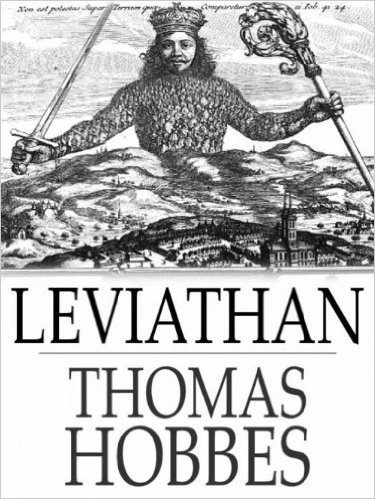
Image retrieved from: https://secretlifeofareader.com/2016/08/08/classics-review-leviathan-by-thomas-hobbes/
One representation of the “old Knights”, or the knights who act for themselves is King Pendragon. In one tale he falls in love with the Countess of Cornwall. When she spurns his advances he lays siege to the castle.
the knight might many pavilions, and there was great war made on both sides, and much people slain!” “A thousand?” suggested Garheris.” “Two thousand at least, “ said Agravaine”
This story suggests a self serving king, one who is glorified by his vengeance against a woman who spurned him. He is willing to put this personal vengeance above the welfare of those who he has fight for him. When King Uther is described to children he is glorified because he has sacrificed so many lives to further his personal cause. Merlyn is critical of this measure of glory and instead sees King Uther as careless with the lives of his people.
Look at the barns burnt, and dead men’s legs sticking out of pends, and horses with swelled bellies by the roadside, and mills falling down, and money buried, and nobody daring to walk abroad with gold or ornaments on their clothes. That is chivalry nowadays. That is Uther Pendragon touch.
This gory and hideous scene symbolizes the result of rulers who rule for themselves and not for the betterment of the people.
Pellinore is a knight that Arthur admires significantly in the early stages of the book. Pellinore also represents the “Old Knight”. Pellinore’s cause in life is to chase a questing beast.
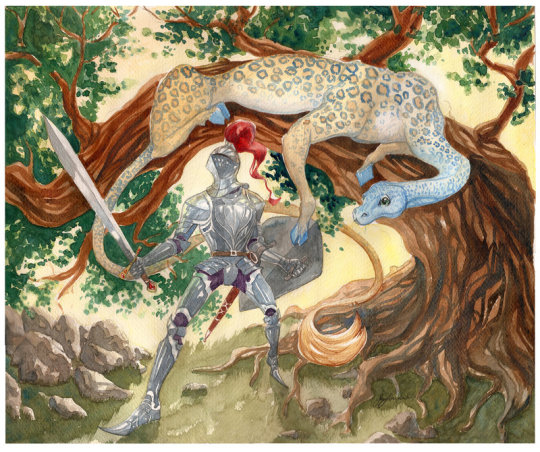
Image retrieved from: http://cheshfire.deviantart.com/art/King-Pellinore-and-the-Questing-Beast-421356315
“It is not for us to catch her, Pellinore. It is for you After all, she is your life’s work isn’t she?” “She’s stupid,”…”What is the point in catching her?” “What?” After all, she is probably quite happy on the cliffs.”
Later when Pellinore is in a sour mood from a love affair it is suggested that since the beast is dead they should dress up as one, and then be hunted.
“The royal melancholy,” said he, “can only be dispelled by Questing Beast. This is the subject to which the maharajah sahib has been accustomed by lifelong habit…I believe the the Questin’ beast is dead. Anyway it is in Flanders.” “Then we must dress up,”said sir Palomides. “We must assume the role of Questing Beast and be hunted ourselves.”
Reading this, it strikes me that Pellinore has little purpose in life. He comes across as a bored noble man, unable to see the point in the quest that is his life’s work. Pursing a beast provides nothing for his country, it is entirely self serving. When it is suggested that they then dress about as a beast to be quested after the questing beast is killed it becomes clear they have nothing better to do than to entertain themselves. Unlike Uther they do not directly cause harm but rather neglect to do any good and instead pursue foolish quests for their own amusement.
The old knights, the ones ones we are fighting against, will be mostly too old to learn. I think we shall be able to to get them in, and keep fighting the right way, but they will be inclined to stick to the old habits, like Sir Bruce…Grummore and Pellinore will be all right, because they were always kindly in themselves.
Arthur in his conversations with Merlin comes up with an idea of how knights should behave that contrasts with the knights depicted in the story.
I will try to get them into our Order. We shall have to make it fashionable and all that. Everybody must want to be in it. And then I shall make the oath of the order that Might is only to be used for Right? Do you follow. The Knights in my order will ride all over the world, still dressed in still and whacking away with their swords—that will give an outlet for wanting to whack…but they will be bound to only stoke on behalf of what is good, to defend virgins against Sir Bruce and to restore what has been done wrong in the past.
Arthur ’s suggestion that might shouldn’t make right but can still be used for right raises the complex question of when and how force should be used if ever, and the question of what role knights should play. Kay, during one of his rides with Arthur and Merlyn, pursues the idea that there are good reasons to start wars. He suggests that if a ruler believes he can make peoples lives better by changing their way of life that force is an acceptable way to do so. Merlyn responds:
There was such a man when I was young—an Austrian who invented a new way of life and convinced himself that he was the chap to make it work. He tried to impose his reformation by the sword and plunged the world into chaos. But the thing which this fellow overlooked, my friend is that he had a predecessor in the reformation business, called Jesus Christ… Jesus did not turn disciples into storm troopers, burn down the the temple at Jerusalem, and fix the blame on Pontius Pilate. On the contrary, he made it clear that the business of the philosopher was to make ideas available, not to impose them on people.
However Merlin also aided Arthur in wining his first battles. This suggests that though he does not believe in imposing ideas through Might, that it might still be necessary. Arthur also suggests that people may be both good and bad, and a governments role maybe to facilitate the good. This is evident when he suggests giving his knights a “good” outlet for their “fox hunting desire”.
The complexity of knighthood and how it is portrayed is important, because it relates to the complexity of governance. The experience that Arthur goes through to learn how to rule, and how his ideas transform through his conversation with Merlyn indicate that there isn’t a clear answer to how one should rule and how one should use might. We still grapple with this today. The US struggles with what makes a reasonable case for war, when wars should end, and if they are necessary.
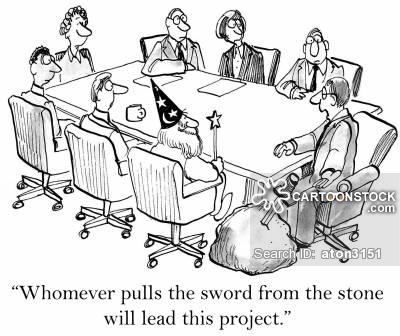
Image retrieved from:https://www.cartoonstock.com/directory/k/king_arthur.asp
Source: White, T.H. (2011) The Once and Future King. New York: Penguin Group (USA).
I apologize that I have not cited page numbers. Unfortunately I read on a kindle because the font is bigger and more spaced out. However I haven’t yet discovered how to find the page number the corresponds to the hardcopy book within the kindle.
1 note
·
View note
Text
Hey Pandora,
I definitely saw those allusions to Nazi Germany too. There were several other times I thought the text was alluding to more current leaders in some way, but I’m not totally sure how. I thought the king of the moat “Mr. P” was symbolic. He was described as a sort of powerful tyrant. When the Wart is a goose, he sees a totally different society with a much kinder leader.
Blog 1:ENGL 1500
Based on what you’ve read so far, how does White depict an ideal king of Britain? Why might this be important in considering British rulers in the early 20th century?
In the legends of Arthur and the knights of the round table, Arthur seems to be idolized as an perfect ruler. In “The once and Future King” By T.H. White, the relationship between Arthur and his foster brother Kay is used to compare their traits, and highlight characteristics within Arthur such as loyalty, courage, and an innate sense of justice and equality. Towards the beginning of the book Wart (later know as Arthur) and his foster brother Kay take Cully, a hawk, out to go hawking. Kay is the legitimate son of Sir Ector and Author is an adopted child. As such Kay is leading the adventure. It appears that Kay decided to take the hawk out, despite it being in a condition where it was unsuitable to be flown. Respectively they lose the bird when they head out into the woods. During the following search for Cully a dispute breaks out between the boys.
“Kay lost his temper. ‘Let him go, then,” he said. ‘He is no use to anyway.’ ‘Oh, we could not leave him,’ cried the Wart. ‘What would Hob say?’ ‘It is my hawk, not Hob’s,’ exclaimed kay furiously. ‘What does it matter what Hob says? He is a servant.’ ‘But Hob made Cully. It is all right for us to lose him, because we did not have to sit up with him three nights and carry him all day and all that. but we can’t lose Hob’s hawk. It would be beastly.’(White)”
Following this dispute, the Wart stays out in the woods throughout the night to find Cully and Kay return to the castle. This argument highlights Arthur’s sense of loyalty and respect for people, including those of a lower social standing. The Wart is defensive of Hob’s work towards training Cully, and aware of their “moral” responsibility to return Cully. He displays this by acknowledging Hob’s work, “Hob made Cully” and stating their obligation to return him. “We can’t lose Hob’s hawk. It would be beastly”. This is compared to Kay’s reaction. Kay is dismissive of both his responsibility to returning the hawk, and dismissive of Hob, and Hob’s devotion towards the bird. Kay justifies the situation by saying “It is my hawk, not Hob’s…What does it matter what Hob says? He is just a servant”. This indicates that Kay has little respect for Hob because he is of a lower social class. This statement also displays a lack of empathy. He is unable to, or does not want to put himself in Hob’s shoes and recognize the importance of Cully to Hob. This comparison highlights Arthur as being courteous and respectful, empathizing with the lives of others. Furthermore Arthur choosing to stay, and Kay choosing to leave displays both courage and devotion on the side of Arthur. Preceding another adventure the boy’s take, Kay is upset that Arthur has been receiving more attention from Merlin their tutor. Kay wakes up Arthur to ask where he had been. Arthur had spent the night with the hawks as part of his lessons with Merlin. When Arthur refuses to tell Kay where he had been Kay starts a fight by pinching Arthur. Afterward Arthur goes to speak to Merlin.
“‘Well, Kay thinks it is unfair it is unfair that you are always turning me into things and not him. I have not told him about it but I think he guesses. I think it is unfair too.’ ‘It is unfair.’ ‘So will you turn us both next time that we are turned?’ (White)”
Merlin is initially disagreeable, but Arthur persist until Merlin devise an adventure in which Kay could accompany Arthur. This scene displays Arthur’s insistence on equality and his unwavering loyalty towards this brother, despite their quarrel prior to his conversation with Merlin. These characteristics are again contrasted with unfavorable characteristic’s in Kay, mainly in this scene, jealously. T. H. white, assuming Arthur is representative of an ideal monarch, emphasizes the characteristics of a ideal ruler to be a ruler who is able to listen to and respect his people, and one who rules with a sense of justice and equality. The comparison between Kay and Arthur is an effective for highlighting these characteristic because it provides an example of both a potentially good and potentially bad ruler.
20th Century Implications:
T.H. White published “The Once and Future King” in 1958. WWII ran from 1939-1945, with the British declaring war on Nazi Germany in 1939. Within the text there does seem to be illusions toward the state of the world when the book was written. Merlin is described to live backward in time. Throughout the text he references modern times. At one point he describes “An Austrian who plunged the world into chaos (White)”. Another reference to current times could perceived to be when Arthur visits/spends time as an ant. The world of the ants is depicted as an almost communist society. The worker ants compulsively follow direction’s from their queen without thought. Furthermore Arthur complains that their language doesn’t even allow him to ask the ant if they like or agree with their situation. This is reminiscent of a dictatorship, perhaps even that of Nazi Germany. I wonder if the characteristics that make Arthur good, his strong moral compass, empathy, and loyalty are a reaction to the lack of these qualities in the leadership of Nazi Germany?
Source: White, T.H. (2011) The Once and Future King. New York: Penguin Group (USA).
1 note
·
View note
Text
The Complexity of Knighthood
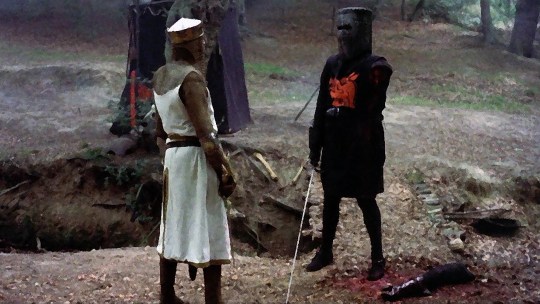
Knighthood is perhaps one of the most diverse professions described in The Once and Future King. The first glimpse of a knight we get is King Pellinore, the clumsy knight that the Wart finds hunting the Questing Beast. From here on out, we are exposed to a myriad of different knights. Sir Grummore Grummersome, Kay, and Arthur himself each juxtapose each other and the traditional notion of a knight with different attitudes, morals, and priorities. The differing personalities of all the knights demonstrates the complicated nature of knighthood. It accentuates the fact that not all knights are righteous, brave, and strong. This complicated portrayal is important to illustrate knights not as people who were inherently good, but as people with flaws like anybody else.
King Pellinore looks at first like the quintessential knight. He is fully clad in steel armor, riding a horse while going on an important quest. But very quickly we realize that he is not what most people would think of a s a knight. He is clumsy, getting himself tangled with his dog’s leash: “he was galloping round and round the tree, in the opposite direction to the one in which the brachet had wound herself up. He went round three times too often, the brachet meanwhile running and yelping the other way…” (26). We see his foolish behavior later in the story in his joust against Sir Grummore Grummersome. Their entire fight is silly and clumsy, and it almost felt as if it was a scene in a Monty Python movie. Grummersome is also portrayed in a comical way. He and King Pellinore build a strong friendship and continue to be portrayed in a somewhat silly way. King Pellinore also displays a distinct lack of bravery and shows that he is not as proficient of a hunter during the hunt: “King Pellinore bounding along and crying out, “Tally-ho! Tally-ho! Tally-ho!” in ignorance that the hunt was done. When informed of this, he stopped and said “Tally-ho, what?” in a feeble voice, then relapsed into silence” (151).
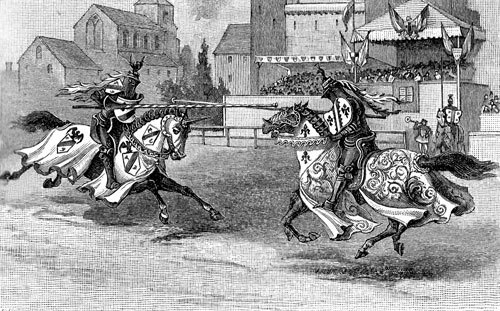
King Pellinore does have a more honorable moment when he discovers that the Questing Beast has fallen ill. He takes her in and nurses her to health, so that they may continue their adventure together. Even with this honorable act, King Pellinore’s purpose so far has just been to adventure and provide comedic relief, rather than doing good deeds for the kingdom.
We see Kay’s journey to knighthood far before Arthur is a knight. Kay was always very arrogant about his position as Sir Ector’s son and his destiny to become a knight. The Wart has to watch and assist as Kay undergoes his knighthood ceremony. Kay exhibits some qualities that are not very knightly at all, even after becoming a knight. He is not nearly as brave or honorable as the Wart, which is shown countless times throughout the first part of the book. Kay almost always disagrees with Arthur is saying, while Arthur seems to learn more from Merlyn’s wise advice. Near the same time that Arthur realizes that “Might is not Right,” Kay has a conversation with Merlyn in which “the magician clenched his fists, twisted his gown into screws, and began to shake all over” (266) because of what Kay thinks. Merlyn reacts this way because Kay’s way of thinking is unhealthy for a leader or a knight. Merlyn tries to convince him Arthur is fighting the war to “make ideas available and not to impose them on people” (267). But Kay says that “Arthur is fighting the present war… to impose his ideas on King Lot” (267).
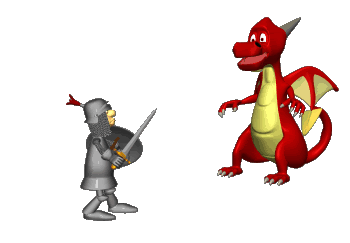
Arthur turns out to be how most people would think of a knight. He demonstrates his courage in the war, during battle, but demonstrates his honor with his great leadership decisions. When he realizes that “Might is not Right,” he realizes that he has to rule for everybody in the kingdom, and even everybody in the kingdom he is conquering. Arthur also has the ability to learn quickly through Merlyn’s teaching. This dynamic quality separates Arthur from the rest of the knights in the book. Arthur also has the wisdom and intelligence to make very good decisions, with some help from his advisors.
T.H. White shows the readers a concept of knighthood that is complicated by many different personalities and missions. Knights can be those who fight for the good of the people or those who go on their own quests. They can be good-hearted and want to save people, or they could be deceiving and selfish. White uses these contrasting portrayals of a knight to emphasize that a knight is not always brave and honorable. It is important that it’s shown as complicated because knights could have been bad people too and these figures should not always be glorified.
1 note
·
View note
Text
The Ideal King of Britain
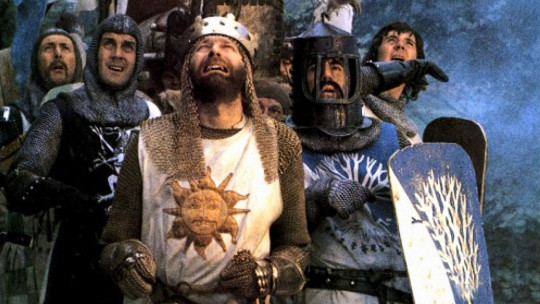
The first segment of the Once and Future King by T.H. White focuses on King Arthur’s childhood at Sir Ector’s castle. He abides there with Kay, Sir Ector’s son, and the rest of the family and staff that live in the castle. Arthur, who is called the Wart at this point, is less respected and venerated on this estate than his counterpart Kay. Kay is Sir Ector’s true son, whereas the Wart is being raised as Sir Ector’s bastard son.
From this early depiction of the King, it is hard to discern qualities that might make for a good British ruler. After all, the Wart doesn’t know his own significance yet, nevertheless that he is a king. However, the young king’s life gives significant insight into how a great ruler can be created, and his experiences show him a wide range of leadership.
First and foremost, White depicts an ideal king of Britain as someone who is very wise. The Wart’s journey begins with his misguided trip through the woods where he meets Merlyn. Merlyn helps the Wart back to the castle and becomes the Wart’s tutor. At this point it is notable that Sir Ector wanted a tutor for both the Wart and Kay. But as the story progresses, it becomes clear that Merlyn is there solely to educate the Wart.
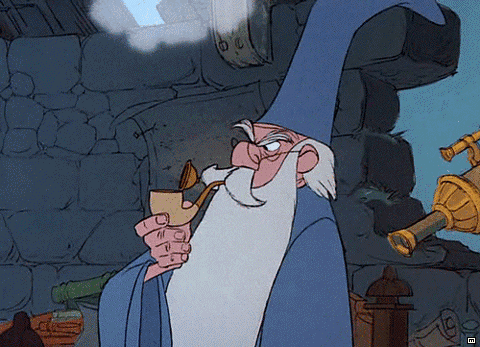
But Merlyn’s particular brand of education is much different than a normal child’s education. The education that the Wart receives is based off the wisdom gained from experience. White emphasizes the value of wisdom in a leader by illustrating the valuable effects that experiences can have. White chooses to portray the Wart as the person who will one day become the ideal British monarch. But White also uses Merlyn’s visions to show the Wart examples of great leaders.
Merlyn educates the Wart by putting him in situations that he would have otherwise never been in. Putting oneself in another’s shoes can help a person gain empathy. Being able to understand the feelings of others is an essential trait of a good ruler. The experiences that the Wart has in these “visions” helps him gain the wisdom that he needs to rule, as well as building up his empathy.
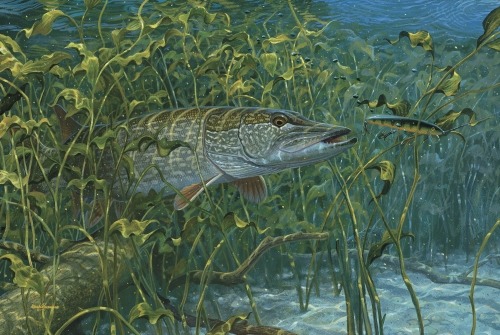
Merlyn’s first lesson puts the Wart inside the body of a fish. He learns how to swim and how to perceive things in a different way. Most importantly, he meets one example of a monarch: a large fish called Mr. P who is the king of the moat. Here, Merlyn attempts to show the Wart what it is like to rule: “You will see what it is to be king” (51). The Wart speaks with the king and listens to the profound words he has to say. “There is only power. Power is of the individual mind, but the mind’s power is not enough. Power of the body decides everything in the end, and only Might is Right” (52). Mr. P seems to be a tyrant, and this vision shows the Wart the effects of this powerful rule.
After the Wart’s journey as a fish, Merlyn shows him another monarch whom he has already met. The Wart met King Pellinore in the woods in the first chapter, and now, Merlyn shows the Wart the King in a tilt against another knight. After a less than graceful fight, “the knights had now lost their tempers and the battle was joined in earnest” (67). This battle goes further to show the Wart the value of a fair fight. Near the end, King Pellinore surrenders, and then immediately attacks Sir Grummore again. Merlyn includes this humorous and clumsy fight to show the Wart that a title doesn’t mean everything.
Merlyn then changes the Wart into a Merlin, to experience the lives of the birds that they used every day to hunt. Within the birds’ enclosure, the Wart encounters a stringent hierarchy of birds. Cully, the bird that the Wart and Kay used during the first chapter, was one of the Colonels. Here, the wart got to witness an entirely new hierarchy of beings, and learned to earn the respect of others.
The Wart, as he is in this part of the book, has a long way to go before he is a great ruler, but this journey has emphasized the importance of wisdom in a ruler. Everything the Wart experiences is training for one day being the King of Britain.
This journey to becoming a great ruler is especially important when considering the work of early 20th century British leaders. The early 20th century was a time of much war, and these monarchs had to think carefully to make the right decisions. They used the wisdom from past rulers like King Arthur to help make the difficult wartime decisions easier. White believes that to be the ideal British ruler, one needs to gain wisdom from the past, and heed that information so that the people they rule can prosper.
1 note
·
View note